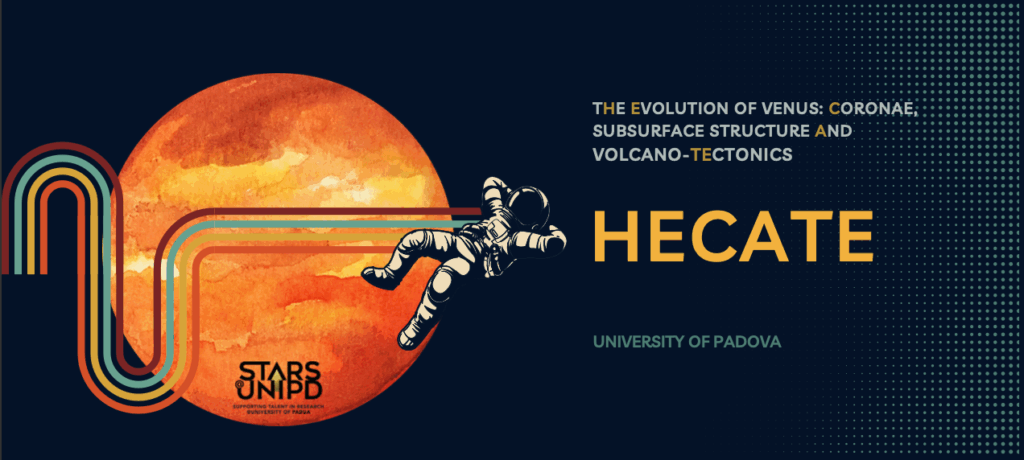WP1: Coronae, ovoid tectonic and magmatic features which are unique to Venus, hold the key to discovering how the planet evolves and to understanding its modern activity. HECATE will compile and digitise corona datasets with the aim of describing and contextualising these features. The result will be a detailed list of coronae and their environs on which a full suite of analyses can be run.
WP2: HECATE will investigate the subsurface plumbing system of coronae. By mapping linear, extensional features such as dikes and graben, and applying fractal analysis on these fractures, the magmatic plumbing system within the coronae can also be mapped. The outcomes of this work include a global map of tectonic-volcanic relationships for coronae and the characterization of magma reservoirs that link underlying mantle plumes to coronae.
WP3: The next step is to investigate the subsurface structure of Venus’s coronae by comparing the results of WP1 and WP2 with information derived from traditional geophysical methods and numerical modeling. HECATE will resolve the rheological layering of Venus’s crust, mantle, and lithosphere and test different scenarios for how recycling of the crust and volatiles affects volcanism at coronae.
WP4: Numerical modeling is a key component of HECATE and necessary in order to investigate the ratio of intrusive magmatism to extrusive volcanism, the hydration state of Venus’s geosphere, and the degree to which Venus’s lid is horizontally mobile. To this end, we will develop both global and regional high-resolution models with the GAIA geodynamical code that incorporate varying volatile abundances, thermal conditions, kinematics, and other boundary conditions.
